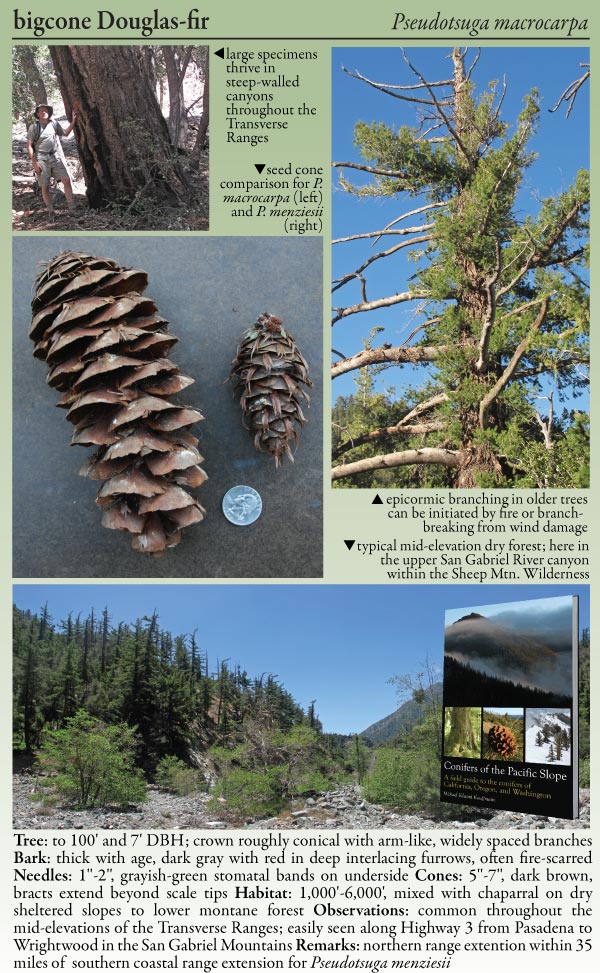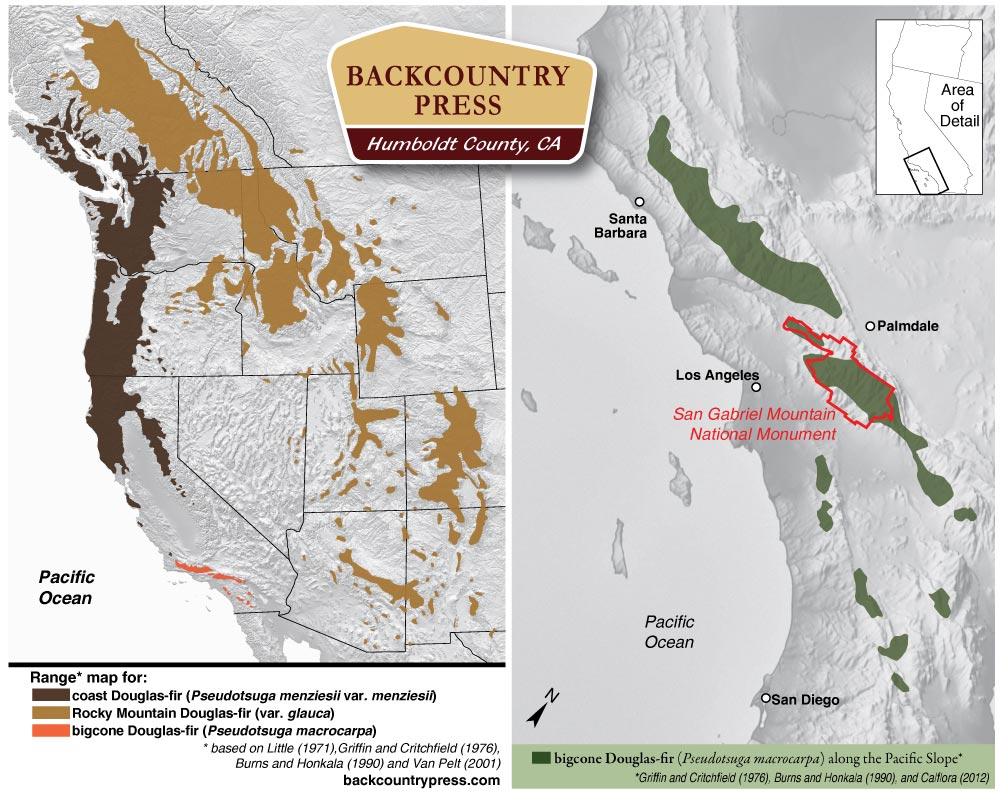Pseudotsuga macrocarpa
Because I will undoubtedly be making more posts about PSMA, as I embark further into a mapping and monitoring project in the San Gabriel Mountain National Monument, I thought a post that provides an overview of this amazing species would be in order.

It has been called the desert fir (Jepson 1920), bigcone spruce (Munz 1959), false hemlock (Sargent 1884), and ultimately bigcone Douglas-fir (Abrams 1923). Clearly there was confusion as to this species relationship to other members of Pinaceae. It is now described as a Pseudotsuga, being ecologically distinct from its taxonomically complex western North American counterpart, Douglas-fir (Pseudotsuga menziesii). In addition to bigcone in Southern California, five other species of Pseudotsuga occur across Canada, USA, Mexico, Japan and China.
Pseudotsuga macrocarpa description from Conifers.org
When the seed cones are not in evidence, it generally resembles interior Douglas fir (P. menziesii subsp. glauca) in bark and foliage characters, and somewhat in growth form; however, the species do not co-occur in their native habitats. It forms a tree that commonly attains 30 m height and 100 cm dbh, with a roughly conical crown that often bears some deformation due to the dry sites, poor soils and frequent fire that this tree must frequently contend with. The twigs are slender, glabrous or pubescent. The needles are (20-)25-45 × 1-1.5 mm, bluish green, with a mucronate tip. The pollen cones are pale yellow. The very distinctive seed cones are 9-20 × 4-7 cm; the bracts are often, but not always, exserted in the mature dry cone. Seeds are 9-12 mm long. 2n=24 (pers. obs. and Lipscomb 1993).
Distribution and Ecology from Conifers.org
USA: California, at 200-2400 m elevation. Habitat slopes, cliffs, and canyons, in chaparral and mixed conifer forests. The northernmost stands of the species, in Kern County, are about 35 kilometers east of the closest approach of P. menziesii (Lipscomb 1993). Hardy to Zone 8 (cold hardiness limit between -12.1°C and -6.7°C) (Bannister and Neuner 2001). See also Thompson et al. (1999).
It is a common species in the Coulter pine (Pinus coulteri)—Hardwood phase of California mixed conifer forests, typically found on steep N-facing slopes and in ravines, i.e., sites with relatively low fire frequency.

FIRE ECOLOGY:
Bigcone Douglas-fir is one of only a few western conifers capable of sprouting following fire. Mature trees sprout vigorously from the branches and bole after burning. The trunk and main branches of bigcone Douglas-fir have many dormant adventitous buds, which are insulated from fire beneath thick bark. Fire or other damage to the tree stimulates cell division and growth in these buds. Consequently, epicormic stems grow from the axils of branches or from branch stubs along the trunk from the middle or upper one-third of the crown. (From Howard, Janet L. 1992. Pseudotsuga macrocarpa)
Pseudotsuga in western North America.


4 Replies to “Bigcone Douglas-fir”
Comments are closed.